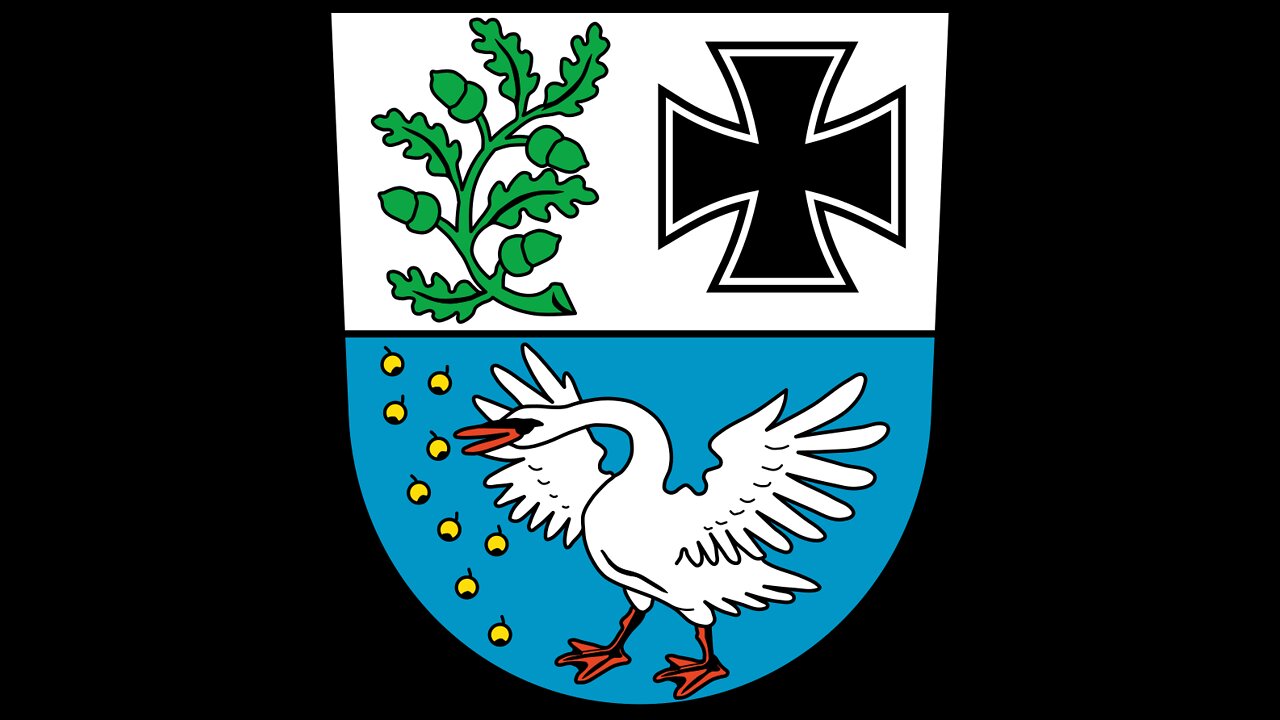Premium Only Content

The City of Großbeeren, Germany
History of Großbeeren
In 1271, Großbern was founded by the family of Berne.
In 1450, Großbern change the village name to Großberne.
In 1500, Großberne change the village name to Großberries.
In 1542, Großberries change the village name to Grosen Berenth.
In the 17th and 18th centuries the first centuries, the development of Großbeeren was repeatedly characterized by the devastation of war and many casualties among the inhabitants. This was the case during the Thirty Years' War (1618 to 1648) and the Seven Years' War from 1757 to 1763, when in 1760 the church and numerous houses in Großbeeren were burned down as Russian and Austrian troops advanced toward Berlin.
On August 23, 1813, the Battle of Großbeeren in which the Prussian-Russian coalition troops under General Bülow defeated the French troops and their Saxon allies, thereby saving Berlin from Napoleon's occupation. After the end of the war, the parish was Built in the years 1818 to 1820 a new village church. A newly erected monument commemorated the victorious battle.
In 1881, the city of Berlin bought the Village of Großbeeren.
In 1906, Großbeeren changed to the district court of Berlin-Lichterfelde.
in September 1942, the Gestapo set up a "work education camp" for opponents of National Socialism and forced laborers. At least 1,197 prisoners died here due to poor nutrition, abuse, exhaustion, or as a result of inhuman forced labor, including 340 from the former Soviet Union, 334 from Poland, 182 from France, 99 from former Czechoslovakia, 40 from Belgium and 97 Germans. An international memorial near the Bülow Pyramid is dedicated to all of them.
On April 23, 1945, Großbeeren was occupied by the Red Army, and from the end of World War II until 1949 belonged to the territory of the Soviet occupation zone of Germany, then to the GDR.
In 1952, Großbeeren was in the district of Teltow in the state of Brandenburg, from then until 1990
In 1993, Großbeeren belonged to the new district of Teltow-Fläming.
In 2001, the Village of Großbeeren change to the City of Großbeeren.
On August 23, 1913, the Memorial Tower to the Battle of Großbeeren in 1813 was inaugurated. It was built on the 100th anniversary of the Battle of Großbeeren. The architect Karl Lange designed the tower and the tower were constructed by the Schwartz company. The inauguration took place in the presence of Prince Eitel Friedrich of Prussia and the District Administrator of Aschenbach. The tower is a 32-meter spiral staircase with 137 steps, starting from the museum hall. There is also a viewing platform.
The battle of Großbeeren occurred on 23 August 1813 between the French army and Prussian troops and resulted in a victory for the Prussians. On the French side, the losses were about 4000 men (dead, wounded, missing, and captured), on the Prussian side approximately 1000 men.
Memorial to the victim's Fascism
In memory of 1,197 prisoners who died in the fascist Gestapo transitional camp Großbeeren and were buried in mass graves in a former gravel pit. The names of the victims were from England, Belgium, Belarus, Bulgaria, Croatia, Denmark, Greece, France, Spain, the Netherlands, Yugoslavia, Lithuania, Latvia, Germany, Poland, Serbia, Slovakia, Turkey, the Soviet
Bülow pyramid
The Bülow Pyramid
While Großbeeren already had a monument dedicated to the Prussian victory (erected in 1817)- designed by none other than Karl Friedrich Schinkel, the citizens of Großbeeren decided to build another one dedicated to Bülow in 1906.
A 10-meter-high fieldstone pyramid was erected on the windmill hill, one of the former Battlefields where two-thirds of the French canons stood during the attack. A windmill originally stood on the “hill” as well, but after the city of Berlin acquired it, they tore it down in 1900 as it was deemed derelict and not worth saving.
-
 2:03:37
2:03:37
Inverted World Live
5 hours agoFake Police Try to Steal Buga Sphere | Ep. 65
88.9K8 -
 2:44:50
2:44:50
TimcastIRL
7 hours agoTrump ROASTS "Communist Lunatic" Zohran Mamdani after NYC Dem Primary Win | Timcast IRL
259K75 -
 3:10:51
3:10:51
Laura Loomer
6 hours agoEP129: NY Democrats Elect Jihadi Communist
40.4K22 -
 3:01:30
3:01:30
Barry Cunningham
8 hours agoPRESIDENT TRUMP HAS SPARKED A NEW ATTITUDE! DO YOU FEEL IT?
80.3K53 -
 8:05:28
8:05:28
RalliedLIVE
11 hours ago $4.09 earnedSpecialist Addicted Man Plays Warzone
65.8K2 -
 1:05:42
1:05:42
I_Came_With_Fire_Podcast
9 hours agoFaith & America's Founders
38.2K5 -
 9:21:33
9:21:33
Dr Disrespect
15 hours ago🔴LIVE - DR DISRESPECT - THE BEST IS BACK!
205K25 -
 1:32:53
1:32:53
Badlands Media
23 hours agoAltered State S3 Ep. 34: Sub Wars, Sun Cycles, and the Shifting Matrix
81.5K7 -
 43:41
43:41
CarlCrusher
6 hours agoSHOCKING Discovery on the Path of the Skinwalker | Thunder Strike Ranch | Episode 2
36.7K4 -
 30:58
30:58
Solar Groove Muzic
1 day ago $1.01 earnedSUMMER AFRO HOUSE BEATS of 2025
26.6K3